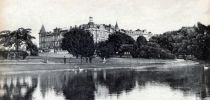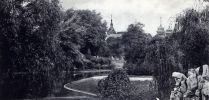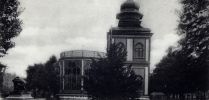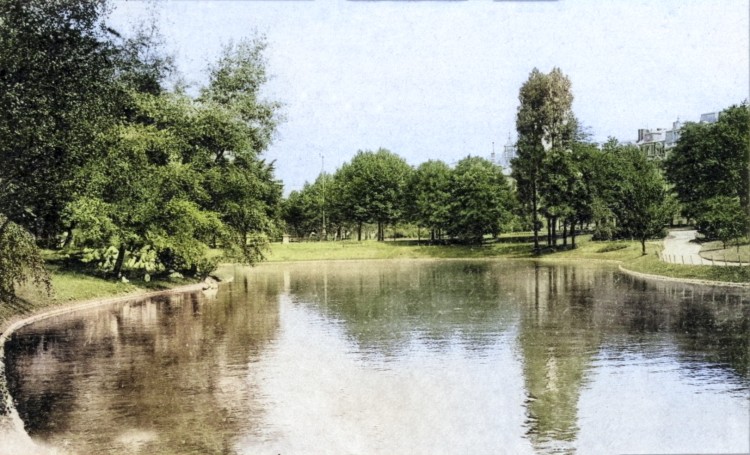
Credits: Square d’Avroy - Universitätsbibliothek Gent (Lizenz) - Edit: maigret.de
From the square to the park
First a late meeting in a café, where the person who invited us said nothing. On the way home, someone tried to put a bullet in Maigret's fur. He wished things would go better. The next day, he walked across the Square d'Avroy in the morning. The translation reads: »[...] of the Square d'Avroy, which Maigret had just crossed [...]«. The translator has probably been taken for a ride.
The description of Maigret strolling across the square is very beautiful and atmospheric. It should be reproduced here in all its beauty.
The fog had lifted, leaving little pearls of frost on the trees and every blade of grass in the Square d'Avroy, which Maigret was crossing.
The association one has as a reader at this point? The man is walking across a square. It doesn't matter that there are trees and blades of grass. Everyone knows places that are not deserts of concrete and/or paving stones. Anyone reading the story doesn't have to stumble at this point.
However, it is a different story when you look up where this square is located in Liège. If you inspect the current maps, you won't find it. That's no drama, names change. Cities produce famous daughters and sons - they should be honored, and it is not appropriate to choose a street or a square in a suburb for each of these honors. Sometimes the celebrities are so important that a renaming takes place in the city center.
But that is not the fate that befell the Square d'Avroy in Liège.
From the train station (Station des Guillemins), straight ahead through the Rue des Guillemins, at the end of which there is a beautiful view of the city rising up the hills all around, you reach the Square d'Avroy, a park-like area that occupies the site of a former arm of the Meuse, with numerous bronze statues and an oriental-style coffee house (Trink-Hall), where concerts are held every evening in summer.
A further description of the park follows: there is an equestrian statue of Charlemagne, who gave his rights to Liège in those days and who "in an imposing posture, on a lightly striding horse, admonishing the crowd to respect the laws" looks out into the park. There are also bronze groups and a beautiful view of the Royal Conservatory of Music, whose string department has a special reputation.
The description comes from the book "Belgium and Holland together with the Grand Duchy of Luxembourg" by Baedeker from 1891. The city map is clear: this square existed. And who wouldn't trust Baedeker?
The term "square" is one of those things: although the French have borrowed the term from English, they understand it differently from the creators of the word.
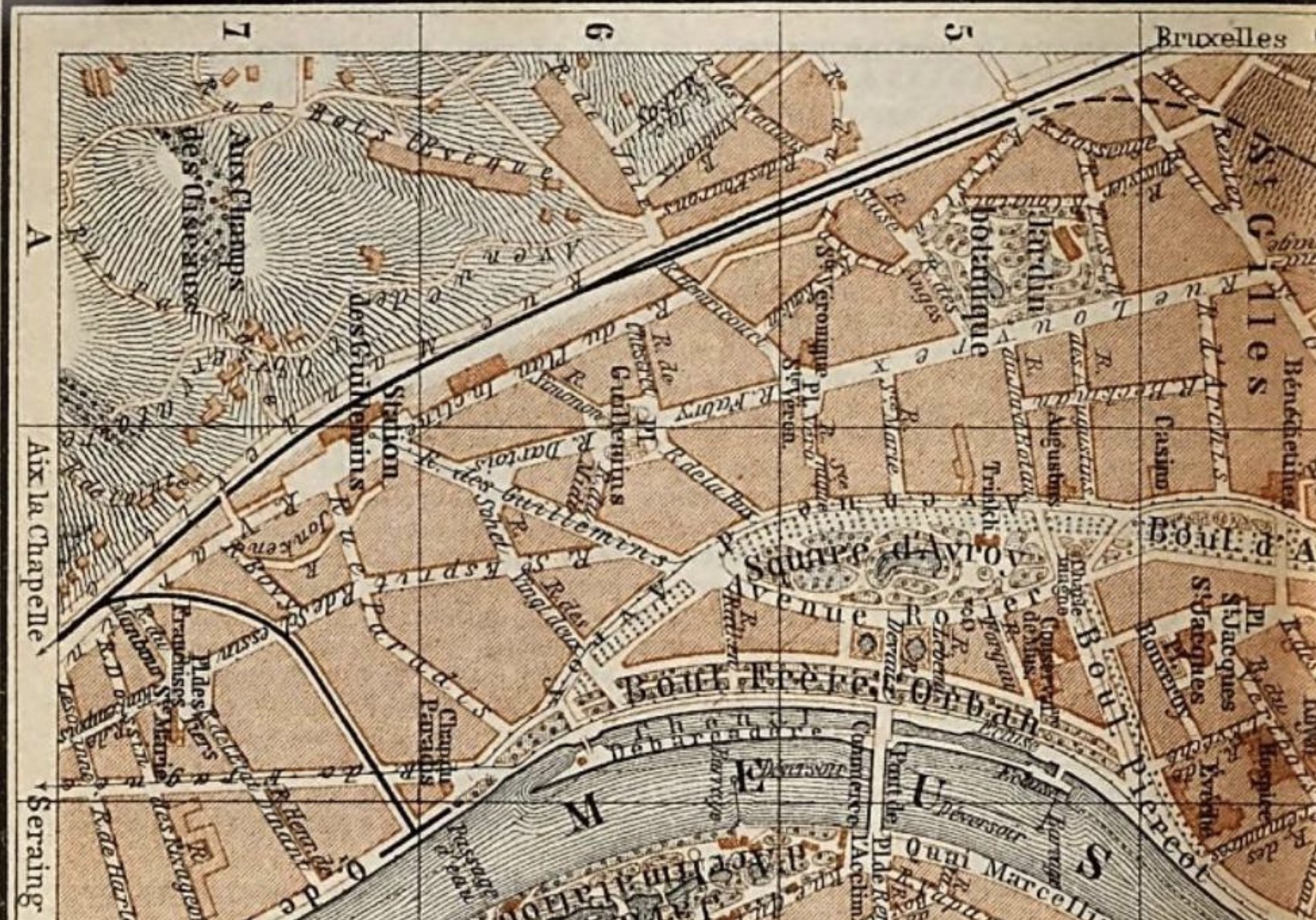
In England and America, the term is used to describe different types of squares. It can be a public Town Square or a Market Square - or even a Garden Square, where the green elements of the square predominate.
The French, on the other hand, have concentrated on the beautiful. Nobody in La Belle France would think of using the term market square. No, in France it's a square with a small public garden or perhaps a pure garden. (It could also be a crossroads between several squares, but that's a bit out there ...)
The fact is that this "Square d'Avroy" does indeed exist, but on a map from 1904 the square had already become a park. That was more accurate - because what square comes with meadows, trees and a pond? That's the classic park. So the city fathers decided to rename the ensemble.
The only problem is that this apparently didn't make it into the linguistic consciousness of the people of Liège, because there's no other explanation for why Simenon still used the old term "Square" for the square. After all, the renaming took place either before or immediately after his birth and yet he used the word "square" almost thirty years later.
This would also have linguistic consequences for passing this place: Maigret would not cross it, but traverse it. This would also suit the atmosphere - trees, blades of grass, frost - better than a square.
Note on the image gallery: Ghent University Library - License BY-SA 4.0


